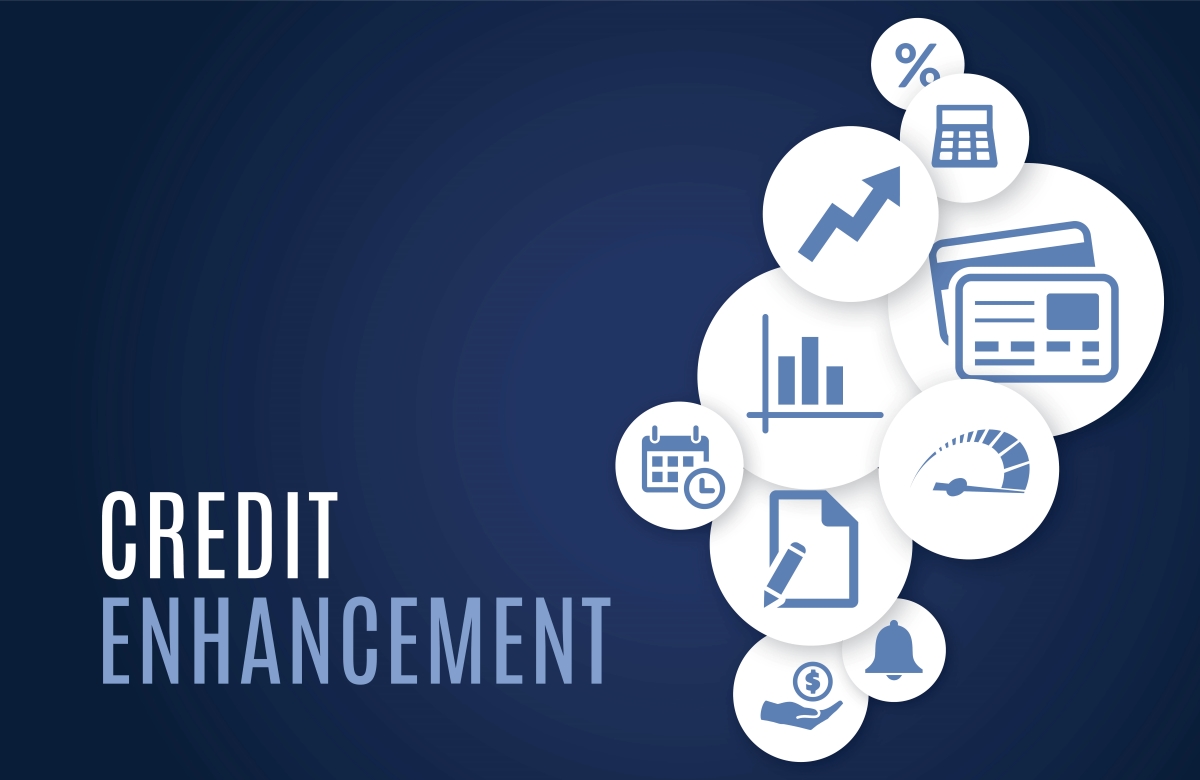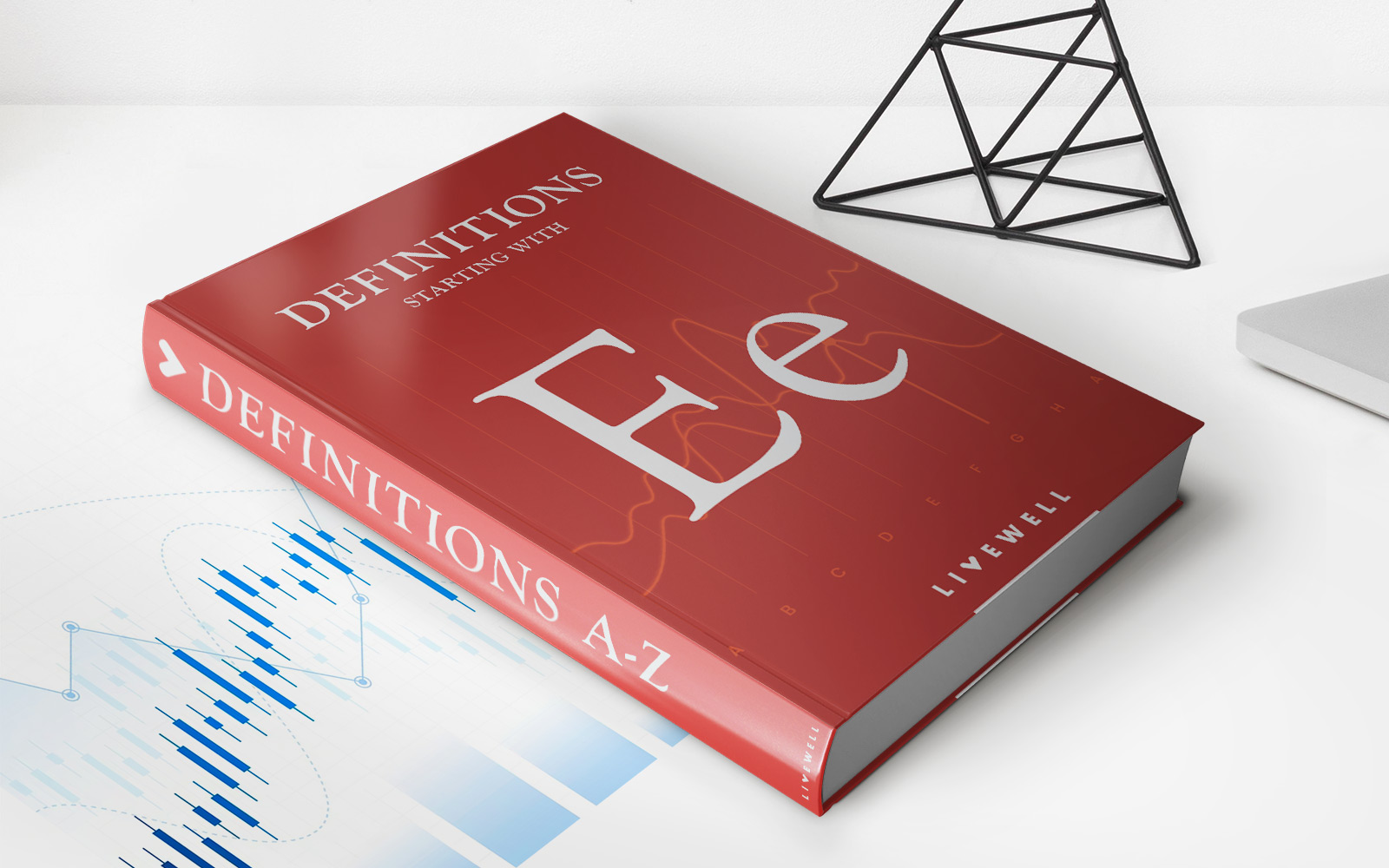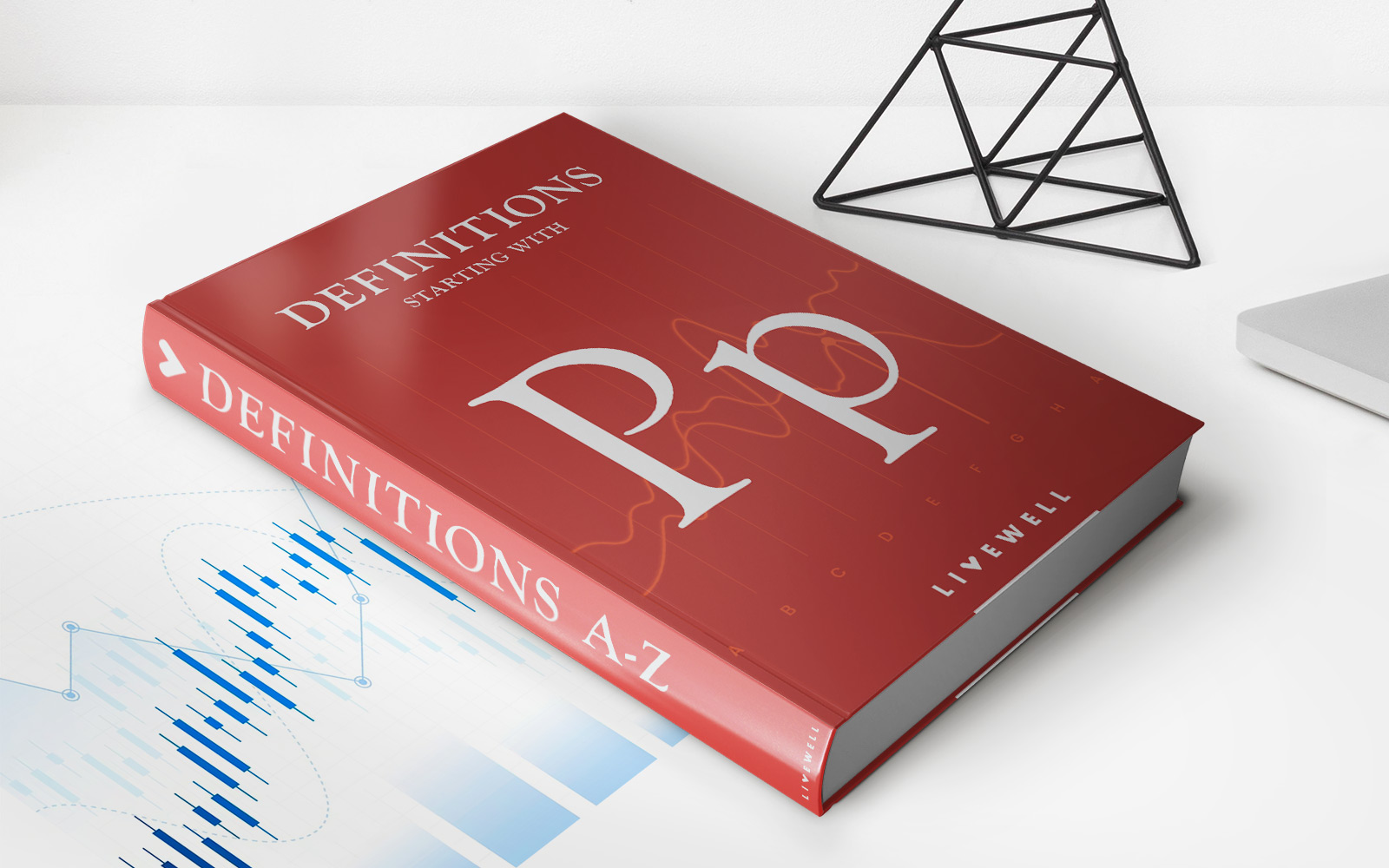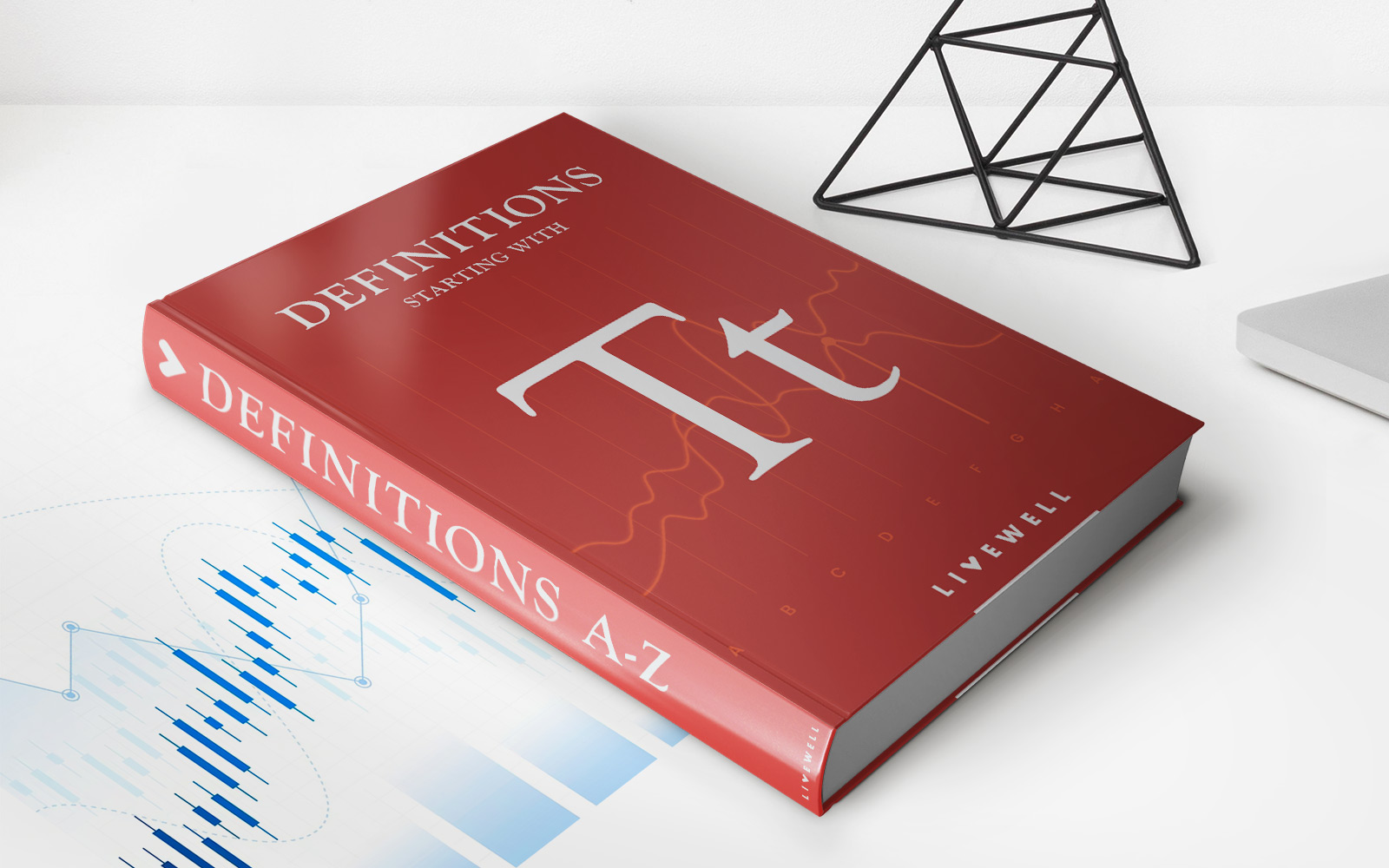

Finance
What Is Credit Enhancement
Published: January 13, 2024
Discover how credit enhancement can improve your finance situation and increase your borrowing power. Learn about the benefits and strategies involved in this financial management technique.
(Many of the links in this article redirect to a specific reviewed product. Your purchase of these products through affiliate links helps to generate commission for LiveWell, at no extra cost. Learn more)
Table of Contents
Introduction
Credit enhancement plays a crucial role in the world of finance and lending. It is a process designed to improve the creditworthiness of a borrower or a financial instrument, reducing the perceived risk for lenders and investors. In simple terms, credit enhancement provides a level of reassurance to investors that they will be repaid, even if the borrower or issuer faces financial difficulties.
For borrowers, credit enhancement opens up opportunities to access financing at more favorable terms and conditions. Lenders and investors, on the other hand, benefit from reduced risk exposure and potentially higher returns on their investments. It is a win-win situation that promotes the flow of capital and supports economic growth.
Credit enhancement takes various forms and can be utilized across different financial sectors. Whether it is securing a loan, issuing bonds, or investing in structured finance products, credit enhancement mechanisms are employed to inspire confidence and mitigate potential losses.
In this article, we will explore the concept of credit enhancement in detail, looking at its definition, purpose, types, benefits, risks, and real-life examples. By gaining a deeper understanding of credit enhancement, you will be better equipped to make informed financial decisions and navigate the complex world of lending and investment.
Definition of Credit Enhancement
Credit enhancement refers to the process of improving the credit profile or financial stability of a borrower or a financial instrument, thereby reducing the perceived risk associated with lending or investing. It involves the implementation of various measures and mechanisms to strengthen the creditworthiness of the borrower or the financial product, increasing the likelihood of timely repayment or default mitigation.
At its core, credit enhancement aims to provide additional safeguards and reassurance to lenders and investors, encouraging them to provide financing or invest in otherwise riskier opportunities. By reducing the potential losses, credit enhancement enables the flow of capital to individuals, businesses, and organizations that may not have access to favorable financing terms due to perceived higher risk.
There are several factors that can contribute to the need for credit enhancement. It can be due to a weak credit history or rating of the borrower, lack of collateral, volatile market conditions, or the complexity of the financial instrument being issued. Regardless of the specific circumstances, credit enhancement techniques are employed to mitigate risk and improve the overall creditworthiness.
Credit enhancement can take various forms, depending on the specific requirements of the borrower or the financial instrument. It can involve adding collateral, obtaining credit guarantees, securing letters of credit, acquiring insurance, or utilizing structured finance products.
The ultimate goal of credit enhancement is to provide lenders and investors with a level of comfort and assurance that their financial exposure is adequately protected. By enhancing the credit of the borrower or the financial instrument, it becomes more attractive, allowing the borrower to secure financing at more favorable terms and conditions while providing investors with the opportunity to earn potentially higher returns on their investments.
Purpose and Importance of Credit Enhancement
The purpose of credit enhancement is to improve the creditworthiness of borrowers or financial instruments, reducing the perceived risk for lenders and investors. This serves as a crucial mechanism to facilitate lending and investment activities, ensuring the proper functioning of financial markets. The importance of credit enhancement can be understood through the following key aspects:
1. Enhancing Borrower’s Access to Financing: Credit enhancement allows borrowers with weak credit profiles or limited collateral to access financing that would otherwise be difficult to obtain. By improving their creditworthiness, borrowers can secure loans at more favorable interest rates and terms, facilitating their investment or business endeavors.
2. Mitigating Risk for Lenders and Investors: Credit enhancement is vital for lenders and investors as it helps them manage and reduce the risk associated with lending or investing in higher-risk opportunities. By implementing credit enhancement measures, lenders and investors have a higher level of confidence that their investments will be repaid, even in challenging economic conditions.
3. Promoting Financial Stability: Credit enhancement mechanisms contribute to the overall stability of the financial system by reducing the likelihood of defaults and financial crises. By strengthening the creditworthiness of borrowers and financial instruments, credit enhancement helps maintain the smooth functioning of lending and investment activities, supporting economic growth.
4. Expanding Investment Opportunities: Credit enhancement widens the range of investment opportunities available to investors. It allows them to consider investments that may have otherwise been deemed too risky. Through credit enhancement, investors can diversify their portfolios and potentially earn higher returns by taking calculated risks.
5. Facilitating Capital Markets: Credit enhancement facilitates the efficient functioning of capital markets by attracting capital and promoting liquidity. It encourages participation from a wider range of investors and lenders, leading to increased funding availability for individuals, businesses, and governments.
6. Promoting Economic Development: Credit enhancement is essential for driving economic development by providing financing options to individuals and businesses. By improving access to credit, it encourages entrepreneurial activities, job creation, infrastructure development, and overall economic growth.
In summary, credit enhancement plays a crucial role in the financial ecosystem by improving the creditworthiness of borrowers and financial instruments. It enables borrowers to secure financing at favorable terms, while offering lenders and investors the reassurance and confidence needed to mitigate risk. Ultimately, credit enhancement promotes financial stability, expands investment opportunities, and supports economic development.
Types of Credit Enhancement
Credit enhancement takes various forms, each tailored to address specific requirements and mitigate risk in different financial scenarios. Here are some common types of credit enhancement:
- Collateralization: Collateralization involves providing assets as security to back a loan or a financial instrument. These assets can be physical, such as real estate or equipment, or financial, like cash or marketable securities. By pledging collateral, borrowers offer additional assurance to lenders that, in the event of default, the lender can claim the pledged assets to recover their losses.
- Credit Guarantees: Credit guarantees involve a third party, often a specialized financial institution or a government entity, providing a guarantee that promises to repay the loan or honor the financial obligation in the event of default. This guarantee acts as a form of insurance for lenders, enhancing the creditworthiness of the borrower and reducing the risk of non-payment.
- Letters of Credit: Letters of credit are financial instruments issued by banks or financial institutions to guarantee payment to a beneficiary on behalf of a buyer. In the context of credit enhancement, letters of credit can be used as a form of enhancement by assuring lenders of payment on behalf of a borrower in the event of default.
- Insurance: Insurance is another form of credit enhancement where a borrower or issuer obtains an insurance policy to protect against potential financial losses due to default or other specific risks. In the event of default, the insurance company will compensate the lender or investor, reducing their exposure to risk.
- Structured Finance Products: Structured finance products, such as collateralized debt obligations (CDOs) or asset-backed securities (ABS), involve pooling together various financial assets and issuing securities backed by those assets. Credit enhancement is achieved by tranching the securities, which means assigning different levels of risk and priority of repayment to the investors. This allows investors to choose the level of risk they are comfortable with, while providing additional security to the higher-ranked tranches through the subordination of lower-ranked tranches.
These types of credit enhancement mechanisms can be used individually or in combination to strengthen the creditworthiness of borrowers or financial instruments. The choice of credit enhancement method depends on factors such as the borrower’s credit profile, the nature of the financial product, and the preferences of lenders or investors. By employing these credit enhancement techniques, the risks associated with lending or investment can be better managed, allowing for more efficient capital allocation and increased confidence in the financial system.
Collateralization
Collateralization is a common type of credit enhancement that involves providing assets as security to back a loan or a financial instrument. These assets, often referred to as collateral, act as a form of guarantee for lenders, providing them with a recourse in the event of default. Collateralization enhances the creditworthiness of borrowers by offering an additional layer of protection for lenders.
Collateral can take various forms, including physical assets such as real estate, equipment, inventory, or vehicles. It can also include financial assets like cash, marketable securities, or accounts receivable. The type and value of the collateral typically depend on the nature of the loan or financial instrument and the borrower’s specific circumstances.
When a borrower pledges collateral, they are essentially providing a security interest in the assets to the lender. If the borrower fails to meet their loan obligations, such as making timely payments, the lender can enforce their rights and seize the collateral to recover their losses. This gives lenders a sense of confidence that they have a means of recouping their funds should the borrower default.
The value of the collateral plays a crucial role in determining the maximum loan amount that can be extended or the level of credit enhancement provided. Lenders usually conduct thorough assessments to determine the value and marketability of the collateral, ensuring it is sufficient to cover any potential losses in the event of default.
Collateralization is commonly used in various lending scenarios, including mortgages, auto loans, and asset-backed loans. In mortgage lending, for example, the property being financed serves as collateral, allowing the lender to foreclose on the property if the borrower defaults on the mortgage payments.
While collateralization provides an added layer of security for lenders, it also benefits borrowers. By offering collateral, borrowers increase their chances of securing financing at more favorable terms, including lower interest rates and longer repayment periods. Collateralization can be especially beneficial for borrowers with less favorable credit profiles, as it offsets some of the perceived risks associated with lending to a higher-risk borrower.
However, it is important for borrowers to carefully consider the implications of collateralization. In the event of default, the lender has the right to seize and sell the collateral to recover their funds. This can result in the loss of valuable assets and may have long-term implications for the borrower’s financial stability.
Overall, collateralization is an effective means of credit enhancement that benefits both lenders and borrowers. By providing tangible assets as security, it increases the creditworthiness of borrowers and reduces the risk for lenders. This mechanism enables lenders to extend financing to a broader range of borrowers while providing borrowers with access to more favorable terms and conditions.
Credit Guarantees
Credit guarantees are an essential form of credit enhancement that involves a third party, often a specialized financial institution or a government entity, providing a guarantee to lenders and investors for the repayment of a loan or financial obligation. This guarantee acts as a form of insurance against potential default, reducing the risk for lenders and enhancing the creditworthiness of the borrower.
The purpose of credit guarantees is to provide an additional layer of assurance to lenders and investors, boosting their confidence to extend credit or invest in higher-risk opportunities. By offering a guarantee, the third-party entity takes on the responsibility of repaying the loan in the event of borrower default, thereby mitigating the risk for the lender or investor.
Credit guarantees can be issued for various types of loans and financial instruments, including business loans, bonds, and project finance. They are particularly valuable in situations where borrowers have limited credit history, unstable financial situations, or are operating in high-risk sectors.
The entities providing credit guarantees, also known as guarantors, evaluate the creditworthiness and financial stability of the borrower before issuing the guarantee. This evaluation process ensures that the guarantor is comfortable with assuming the risk and confident in the borrower’s ability to repay the loan or meet the financial obligation.
There are different types of credit guarantees that can be utilized:
- Unconditional Guarantees: These guarantees, also known as full or absolute guarantees, provide a complete assurance to lenders and investors that they will be repaid regardless of the borrower’s financial condition or ability to repay.
- Partial Guarantees: Partial guarantees cover a portion of the loan or financial obligation, reducing the lender’s risk exposure but not providing full repayment in the event of default. They are often used when the borrower’s creditworthiness is relatively weak or when the size of the loan exceeds the guarantor’s capacity to assume full responsibility.
- Direct Guarantees: Direct guarantees are issued by the guarantor to the lender or investor directly. The guarantor assumes the primary responsibility for repayment, bypassing the borrower.
- Indirect Guarantees: Indirect guarantees, on the other hand, are issued to enhance the creditworthiness of the borrower. In case of default, the guarantor would step in and repay the lender or investor on behalf of the borrower.
Credit guarantees provide numerous benefits for both borrowers and lenders. For borrowers, credit guarantees increase their chances of securing financing at more favorable terms and conditions. These guarantees can open doors to funding that may otherwise be unattainable due to perceived higher risk. Lenders and investors, on the other hand, benefit from reduced risk exposure, allowing them to support borrowers and invest in projects that have significant growth potential.
Credit guarantees are commonly used in various sectors, including small business lending, infrastructure development, and emerging markets. Government entities and financial institutions often play a crucial role in providing credit guarantees, stimulating economic growth and promoting access to finance.
In summary, credit guarantees act as valuable credit enhancements by providing an additional layer of security to lenders and investors. They enhance the creditworthiness of borrowers, enabling them to access financing that might otherwise be out of reach. By mitigating risk, credit guarantees promote the flow of capital and contribute to economic development and stability.
Letters of Credit
Letters of credit are an important credit enhancement tool commonly used in international trade and finance. They provide a level of assurance to the beneficiary (seller/exporter) that payment will be made by a bank on behalf of the buyer/importer, typically upon the completion of specified contractual obligations.
Letters of credit act as a guarantee to the seller that they will receive payment for their goods or services, even if the buyer fails to fulfill their payment obligations. This credit enhancement mechanism mitigates the risk for the seller and promotes trust and confidence in the transaction.
The process typically works as follows:
- The buyer and seller agree to use a letter of credit as a payment method. The buyer applies to their bank, known as the issuing bank, to issue the letter of credit in favor of the seller.
- The issuing bank, after conducting a review of the buyer’s creditworthiness, agrees to issue the letter of credit in accordance with the terms and conditions agreed upon by the buyer and seller.
- The letter of credit is sent to the seller’s bank, known as the advising bank or confirming bank, depending on the arrangements made. The seller is then informed by their bank that the letter of credit has been received.
- The seller fulfills the contractual obligations by providing the goods or services as specified in the agreement.
- The seller presents the required documents, such as invoices, bills of lading, and other necessary paperwork, to the advising bank, demonstrating that they have met the specified conditions.
- Once the documents are verified and comply with the terms of the letter of credit, the issuing bank is obligated to make payment to the seller, thereby fulfilling the payment obligation on behalf of the buyer.
Letters of credit provide several benefits for both buyers and sellers. For sellers, they offer a level of certainty and assurance of payment, reducing the risk of non-payment or credit default. Buyers, on the other hand, can use letters of credit to negotiate more favorable terms with sellers, as they demonstrate their commitment to fulfill their payment obligations.
Furthermore, letters of credit are widely accepted in international trade as a secure and efficient means of conducting cross-border transactions. They help bridge the trust gap between parties located in different countries with potentially differing legal systems and business practices.
However, it is important to note that letters of credit can come with certain costs, such as bank fees and charges for document verification. Additionally, the terms and conditions of the letter of credit should be carefully reviewed by both parties to ensure clarity and accuracy, as any discrepancies in the documents submitted can lead to delays or non-payment.
Overall, letters of credit provide a structured and secure credit enhancement mechanism in international trade. They offer protection and confidence for both buyers and sellers, facilitating smoother transactions and mitigating the risk associated with cross-border trade and payment.
Insurance
Insurance is a form of credit enhancement that provides protection against potential financial losses due to default or other specified risks. It involves obtaining an insurance policy from an insurance company, which acts as a guarantor, compensating lenders or investors in the event of borrower default.
When it comes to credit enhancement, insurance can take various forms, including:
- Default Insurance: Default insurance, also known as credit risk insurance, is designed to protect lenders and investors against the risk of borrower default. If a borrower fails to meet their repayment obligations, the insurance company steps in and compensates the lender or investor for the outstanding debt.
- Political Risk Insurance: Political risk insurance provides coverage against risks associated with political instability, government actions, or other events that may hinder repayment. It is often used in international financing and investments, where there is a higher risk of political and economic uncertainties.
- Trade Credit Insurance: Trade credit insurance protects businesses against non-payment or delayed payment by customers. It safeguards companies from losses arising from customer defaults, insolvencies, or other credit-related risks.
- Mortgage Insurance: Mortgage insurance is commonly used in real estate financing to protect lenders against losses in the event of borrower default. It allows borrowers with a lower down payment to secure mortgage loans by providing the lender with insurance coverage.
Insurance as a credit enhancement mechanism offers several benefits. It reduces the risk exposure for lenders and investors, allowing them to extend credit or invest in higher-risk opportunities with greater confidence. Additionally, insurance can enhance the creditworthiness of borrowers, making it easier for them to access financing or obtain more favorable loan conditions.
Insurance also promotes liquidity in financial markets by encouraging lenders and investors to engage in activities that they may have otherwise been hesitant to undertake due to potential losses. With the assurance of insurance coverage, lenders and investors are more willing to provide financing or invest in projects that contribute to economic growth.
However, it’s important to understand that insurance comes at a cost. Premiums must be paid to the insurance company, which can vary based on factors such as the borrower’s credit profile, the loan amount, and the perceived level of risk. Borrowers should carefully assess the cost and benefits of insurance to determine if it aligns with their financial objectives.
In summary, insurance serves as a valuable form of credit enhancement, providing protection against default and other specified risks. It reduces the risk exposure for lenders and investors, enhances the creditworthiness of borrowers, and promotes liquidity in financial markets. By leveraging insurance, borrowers can access financing and investments that may otherwise be challenging, while lenders and investors can mitigate their risk and support economic growth.
Structured Finance Products
Structured finance products are complex financial instruments that combine various assets and liabilities to create customized investment opportunities. These products are often used in credit enhancement strategies to reduce risk and enhance the creditworthiness of the underlying assets. Structured finance products offer a flexible and tailored approach to credit enhancement, allowing for creative risk management and allocation techniques.
Some common structured finance products utilized for credit enhancement include:
- Collateralized Debt Obligations (CDOs): CDOs pool together various debt instruments, such as loans or bonds, and structure them into different tranches with varying levels of risk and returns. Credit enhancement is achieved by assigning the higher-ranked tranches with priority of repayment, while the lower-ranked tranches absorb the majority of the default risk. The tranching process allows investors to choose the level of risk they are comfortable with, offering credit enhancement to the higher-ranked tranches.
- Collateralized Loan Obligations (CLOs): CLOs are similar to CDOs but focus specifically on loan portfolios. They securitize a pool of loans made to businesses or individuals and create tranches of varying risk and return. Credit enhancement is achieved by assigning priority of repayment to the higher-rated tranches, which are backed by the cash flows from the loan repayments.
- Asset-Backed Securities (ABS): ABS are financial securities that derive their value from an underlying pool of assets, such as loans, leases, or receivables. These assets serve as collateral, and the cash flows generated by the underlying assets are used to repay the investors. Credit enhancement techniques in ABS involve structuring the securities in tranches with different levels of risk and return, similar to CDOs and CLOs.
- Structured Notes: Structured notes are debt securities with embedded derivatives that provide investors with exposure to specific underlying assets or market conditions. The structure of the notes can involve various credit enhancement features, such as principal protection or participation in the performance of certain assets.
Structured finance products offer several benefits for both issuers and investors. For issuers, these products allow for the transfer of credit risk, enabling them to optimize their balance sheets and free up capital for other purposes. Investors, on the other hand, gain access to diversified investment opportunities and the ability to tailor their risk and return profiles according to their preferences.
However, it is important to recognize that structured finance products can be complex and involve sophisticated risk assessment techniques. The proper valuation and understanding of the underlying assets and the associated risks are crucial for both issuers and investors to make informed decisions.
In summary, structured finance products provide a flexible and tailored approach to credit enhancement. With their various tranching and risk allocation techniques, they allow for creative risk management and the optimization of investment opportunities. Utilizing structured finance products can enhance the creditworthiness and mitigate risks associated with underlying assets, providing investors with greater confidence and access to diverse investment options.
Benefits and Risks of Credit Enhancement
Credit enhancement offers several benefits for borrowers, lenders, and investors. However, it is important to understand and carefully consider the associated risks. Let’s explore the benefits and risks of credit enhancement:
Benefits:
- Improved Access to Financing: Credit enhancement enhances the creditworthiness of borrowers, making it easier for them to access financing at more favorable terms and conditions. Borrowers with weaker credit profiles or limited collateral can benefit from credit enhancement mechanisms, allowing them to secure loans that would otherwise be difficult to obtain.
- Reduced Risk for Lenders and Investors: Lenders and investors benefit from credit enhancement as it mitigates the risk associated with lending or investing in higher-risk opportunities. Credit enhancement mechanisms provide an additional layer of security, boosting the confidence of lenders and investors and encouraging participation in potentially profitable ventures.
- Increased Investment Opportunities: Credit enhancement widens the range of investment opportunities available to investors. By reducing the risk associated with certain investments, credit enhancement mechanisms enable investors to consider opportunities that may have been deemed too risky without credit enhancement. This allows for portfolio diversification and potential for higher returns.
- Enhanced Liquidity and Capital Flow: Credit enhancement mechanisms promote liquidity in financial markets by attracting lenders, investors, and capital. By reducing the perceived risk, credit enhancement encourages participation in lending and investment activities, facilitating the flow of capital to individuals, businesses, and governments.
- Promotion of Economic Development: Credit enhancement plays a crucial role in driving economic development by providing access to financing for individuals and businesses. By improving creditworthiness and reducing risk, credit enhancement mechanisms stimulate entrepreneurial activities, job creation, infrastructure development, and overall economic growth.
Risks:
- Overreliance on Credit Enhancement: A potential risk of credit enhancement is overreliance on these mechanisms. Borrowers may become dependent on credit enhancement to obtain financing, which can mask underlying financial weaknesses. If borrowers fail to address core issues, such as improving cash flows or creditworthiness, overreliance on credit enhancement can lead to a cycle of borrowing and further financial troubles.
- Increased Cost: Credit enhancement often comes at a cost, such as insurance premiums, bank fees, or higher interest rates. Borrowers should carefully assess the financial implications of credit enhancement and weigh the associated costs against the benefits gained. Additionally, investors should consider the potential impacts on returns and evaluate whether the additional risk protection justifies the added expenses.
- Complexity and Lack of Transparency: Some credit enhancement mechanisms, such as structured finance products, can be complex and involve intricate risk assessment techniques. This complexity can lead to a lack of transparency, making it difficult for investors to fully understand the risks involved. It is important for investors to conduct thorough due diligence and seek professional advice to ensure a clear understanding of the credit enhancement arrangement.
- Counterparty Risk: Credit enhancement mechanisms rely on the creditworthiness and financial stability of the guarantor or the insurance provider. There is always a risk that the guarantor or insurer may default or become insolvent, impacting the effectiveness of the credit enhancement. Therefore, it is essential to assess the credibility and financial strength of the entities involved in providing the credit enhancement.
- Market and Economic Risks: Credit enhancement mechanisms can be sensitive to changes in market conditions and economic downturns. If market conditions deteriorate or economic circumstances worsen, credit enhancement may not provide the expected level of risk protection. It is crucial to consider macroeconomic factors and assess the potential impact on the effectiveness of credit enhancement mechanisms.
Overall, credit enhancement offers numerous benefits by improving access to financing, reducing risk, increasing investment opportunities, and promoting economic development. However, it is essential to understand and manage the associated risks to ensure informed decision-making and optimal outcomes.
Examples of Credit Enhancement in Practice
Credit enhancement techniques are commonly utilized in various sectors and scenarios to enhance the creditworthiness of borrowers or financial instruments. Let’s explore some real-life examples of credit enhancement in practice:
- Mortgage Insurance: In mortgage lending, borrowers with a down payment of less than 20% often require mortgage insurance. This insurance serves as a credit enhancement by protecting the lender against the risk of borrower default. It enables borrowers to access mortgage financing at more favorable terms, such as lower interest rates, despite having a lower down payment.
- Export Credit Agencies: Export credit agencies (ECAs) provide credit enhancement to support international trade and export financing. ECAs offer guarantees or insurance to protect lenders against non-payment by foreign buyers or political risks associated with cross-border transactions. This credit enhancement mechanism boosts the confidence of lenders and enables exporters to access financing for their export activities.
- Securitization: Securitization is a process where financial assets, such as loans or receivables, are pooled together and transformed into securities. Credit enhancement in securitization is achieved through the structuring of different tranches with varying levels of risk. Senior tranches receive priority in repayment, offering credit enhancement to investors who prefer lower-risk investments, while subordinated tranches absorb higher levels of risk.
- Government Guarantees: Governments often provide credit guarantees to support infrastructure projects or stimulate economic development. These guarantees reduce the risk for lenders and investors, making it more attractive for them to finance these projects. For example, the U.S. Small Business Administration (SBA) offers loan guarantee programs to small businesses, encouraging lenders to provide financing to businesses that may have otherwise faced difficulty in accessing credit.
- Structured Finance Products: Structured finance products, such as collateralized debt obligations (CDOs) or collateralized loan obligations (CLOs), employ credit enhancement techniques to create investment opportunities. By tranching the securities and assigning different levels of risk and return, investors can choose the tranche that matches their risk appetite, while credit enhancement is provided through the prioritization of repayment to higher-ranked tranches.
- Trade Credit Insurance: Trade credit insurance protects businesses against non-payment or delayed payment by their customers. It provides credit enhancement by reducing the risk of financial loss due to customer defaults or insolvencies. This allows businesses to engage in trade with confidence, knowing that they have insurance coverage to protect them against potential losses.
These examples demonstrate how credit enhancement techniques are applied across various sectors, ranging from mortgage lending to international trade and structured finance. By utilizing credit enhancement mechanisms, borrowers gain improved access to financing, lenders and investors benefit from reduced risk, and economic development is supported.
It is important to note that credit enhancement strategies may vary depending on the specific circumstances and market conditions. Different scenarios may require different combinations of credit enhancement techniques to meet the unique needs of borrowers and lenders.
Conclusion
Credit enhancement serves as a vital component in the world of finance, providing reassurance and risk mitigation for lenders, investors, and borrowers. It encompasses various techniques and mechanisms designed to improve the creditworthiness of borrowers or financial instruments, reducing the perceived risk associated with lending and investment.
The purpose and importance of credit enhancement are multi-faceted. For borrowers, credit enhancement enhances their access to financing, improves loan terms, and fosters economic growth. Lenders and investors benefit from reduced risk exposure, increased investment opportunities, and more efficient capital allocation. Ultimately, credit enhancement mechanisms facilitate the flow of capital, promote economic development, and contribute to financial stability.
Credit enhancement manifests in different forms, including collateralization, credit guarantees, letters of credit, insurance, and structured finance products. Each type of credit enhancement offers unique benefits and risk mitigation capabilities tailored to specific financing requirements or investment objectives.
Although credit enhancement provides numerous advantages, it is crucial to acknowledge the potential risks associated with these techniques. Overreliance on credit enhancement, increased costs, complexity, counterparty risk, and market volatility are factors that require careful consideration and risk management to ensure optimal outcomes.
In practice, credit enhancement can be seen in various scenarios, such as mortgage insurance, government guarantees, export credit agencies, securitization, and trade credit insurance. These examples highlight the effectiveness of credit enhancement in providing greater access to funding, reducing risk, and facilitating trade and investment activities.
In conclusion, credit enhancement plays a crucial role in promoting financial stability, supporting economic growth, and mitigating risk. By understanding the different types of credit enhancement, their benefits, and the associated risks, borrowers, lenders, and investors can make informed decisions, optimize their financial outcomes, and contribute to a robust and thriving financial ecosystem.














